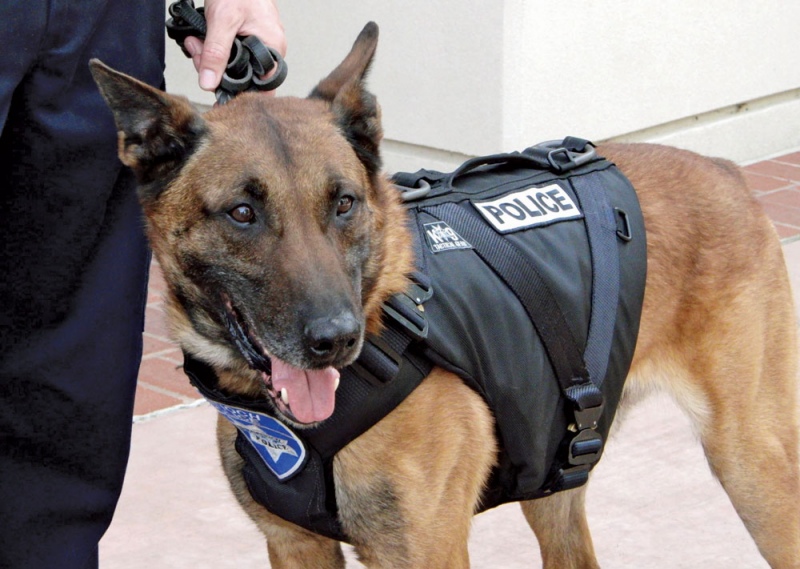To help protect law enforcement K9’s in from overexposure to heat, police departments are using technology to help keep them cool.
As summer temperatures boil, police departments are finding new technologies to keep their K9 units cool.
For dogs that work alongside police officers, staying cool in the summer months can be challenging since the animals sometime sit in parked police vehicles while their owner responds to a call or emergency. And when police dogs are outside on duty, the summer heat can make their work more difficult.
In rare cases, not taking the heat into account can be fatal. This month a canine affiliated with the Arizona Department of Public Safety was left in a police vehicle for too long, and had to be euthanized.
Technology provides one remedy. This summer the Fort Wayne, Ind., Police Department received “K9 cooling vests” for three of the 10 dogs in the department’s K9 unit, said Sgt. Bob Theurer. The gear was donated by HTFx Inc., a Florida company that recently opened up shop in Fort Wayne.
The vests — which are coming soon for each of the department’s seven other K9s in the unit — use exotherm technology to keep the dogs cool. “The technology actually extracts the heat from the body, rather than trying to use the material to cool the body,” Theurer said. “So it absorbs the heat.”
According to the vest’s maker, the company’s proprietary “phase change material” can transition between any temperature between 36 and 200 degrees Fahrenheit. According to HTFx, the heat-extracting technology also can be worn by people — for military personnel, medical procedures, sports fitness and other consumer purposes. Theurer said the cooling vests Fort Wayne’s police officers can choose to purchase the technology for themselves with their uniform allowance.
To activate the vests, a police officer can submerge them in ice water. At first blush, it might seem the vests would need refrigeration when not in use. But Theurer said that isn’t the case. The Fort Wayne Police Department still is experimenting with how to keep the vests activated while not in use.
Weighing about 2 pounds, Theurer said the dogs only wear the vests for 45 minutes to an hour at a time, even though the dogs’ bulletproof vests, weighing in at about 15 pounds, are significantly heavier. The cooling vests aren’t bulletproof, but the material the vests are made from does provide some blunt-force trauma protection.
Theurer’s police dog, Johnny, wears a cooling vest when needed. At first, the dog appeared uncomfortable in the vest, he said. But Johnny got used to it and wears it comfortably now.
A dog can be overcome by heat exhaustion in a matter of minutes. But like humans, at what time of exposure and what temperature varies by breed and age. Younger dogs typically are not affected as quickly as older dogs.
SENSING THE HEAT
The vests aren’t the only type of technology that can help police dogs beat the heat.
At the Medford, Ore., Police Department, three K9 handlers on staff have sensor technology equipped that reads the temperature inside their squad car. When a K9 must be left unattended in the vehicle, a pager-like device on the officer’s belt will receive a signal from the sensor when the temperature rises too much, said Sgt. D.J. Graham.
The sensors can be set to trigger at a temperature chosen by the officer. If the temperature reaches that pre-determined level, the officer can be signaled and go back to the police vehicle to let the dog out.
“It’s really a protection; it’s to protect our investment,” Graham said. “We have an investment in K9, the dogs aren’t cheap, the training isn’t cheap, and we’d hate to lose one of these assets just because of a heat exposure we could have controlled.”
source: Government Technology

